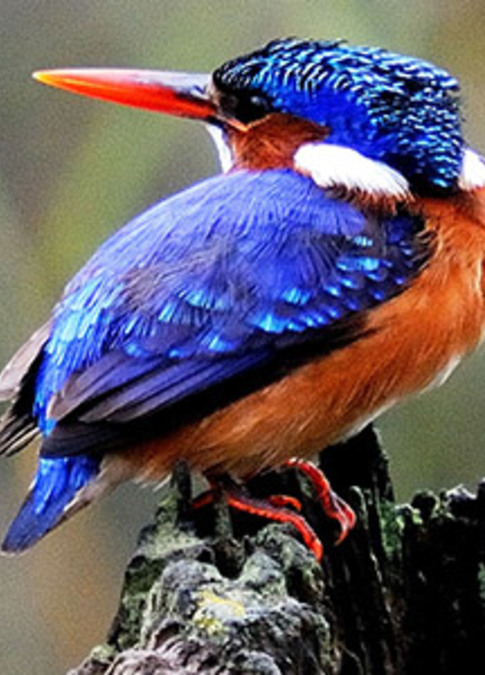Rhino Thandi DAY 32 - 13h00
The small tidal wave I suggested over the weekend appears to be pretty well established. Des from Tweeters reports an incredible amount of support for the wider campaign for rhino at the KKNK music festival taking place at Oudtshoorn. The story of Themba and Thandi is very much alive at this gathering and it's wonderful to see those passionate about our arts showing such passion for our rhino too. I have received some very moving stories of individuals who are inspired by these two animals to do push their circle of influence to do more for rhino.
News of Thandi over the weekend remains positive with several sightings of her with the other rhino confirming they are actively moving around the reserve and show no worrying behavioural signs. Today we once again finalise preparations for a procedure on her tomorrow. As always it feels like we are preparing for the most important event of our lives and like you would expect before a big match, the butterflies have started already. Thandi, has become such a national focus that for these procedures, key people are flying in from around the country to provide specialised input into her wellbeing. As her progress continues I expect this trend to continue. The pressure on the Kariega team doesn't get any less as we progress down the
road to her recovery.
What I am most nervous about for tomorrow is whether my decision to allow such a long gap in between these assessements has been justified or have we let her go too long. I am hoping to be able to confirm that this break from the inherent stresses of each immobilisation, have brought her measurable physiological parameters back to normal without allowing her facial injuries to have deteriorated in the absence of our support. There is so much that could still go wrong around those damaged skull bones and sinus cavities that I keep praying that the miracle of her recovery so far, continues to surprise us at every milestone.
Off-site, the progress continues as we are in discussions daily with individuals, groups and foundations regarding the rhino campaign. From better security to more pressure on government and police, to greater awareness, support-raising events and international information platforms planned for the near future, it is quite obvious that the Kariega tragedy has generated a surge in energy that is swirling around us. As we do our best to ensure the eye of this storm remains as calm and tranquil as possible for Thandi to recover in, the power of what is all around her gathers momentum daily. Their story is generating so many opportunities to raise more awareness and get prominent people behind rhino, that I am finding these reports more and more difficult to get to. So please excuse me if the intervals get longer, its not because we are less busy, its because we are more passionate, more active and seeing more positive results than even Thandi is aware of.
In answer to many questions regarding the physical composition of rhino horn I would like to direct you to an article which Larry Witmer contributed to by T.L. Hieronymous et al (2006), and to whom our acknowledgements are extended. Click here for a link to the article.
To summarise, their horn is made of keratinised tubules of cells (horn tubules) within a keratinised (intertubular) matrix (see image 1 of cross section from above).
Rhino horns show a periodic banding pattern very similar to the growth patterns of tree trunks and in the case of the horns studied these lines showed intervals of about 6cm in the front horn which is very similar to studies of annual growth rate of the front horns of rhino. The reason for the colour banding pattern is linked to changes in concentrations of melanin and calcium phosphate salts within the intertubular matrix. Its hypothesised that the distribution of these two components in the horn contributes to the differential wear pattern of the horn leading to their characteristic sweeping conical shape. The higher concentrations of melanin for one, in the centre of the horn as well as the exposure of the outer layers to wear and tear appear to be factors of their unique shapes. (see image 2 &3 above)
Rhino horn grows off "modified skin" and resembles the microscopic structure of hooves, beaks and claws of many other animals. The rhinos horn may be an amazing structure to behold when you consider that it is simply a modification of the epidermis, we know its presence attached to rhino is what gives these magnificent creatures their unique iconic status. No other animal grows solid "horn" off a dome shaped piece of skin and its one of the many things that makes the rhino special. But there is nothing amazing about its chemical properties. Many studies have been conducted to try and demonstrate its magical properties, but there is no magic to be found in their horn. And herein lies the heart of this tragedy.
The magic lies in the rhino, whole and living, roaming free across the world's remaining natural landscapes, a symbol of what once existed, an anchor into our past natural heritage onto which we so desperately cling. While they are with us, we have hope of resisting mans downward spiral and maybe pulling ourselves back to our senses. Our fight to save the rhino is part of a very thin lifeline, a twisted rope between man and nature. The strength of the rhino, is exists in our appreciation of them, not our consumption of them and this strength give us hope. Without them, the lifeline will not hold and we are all doomed to the shameful abyss.
Will Fowlds








